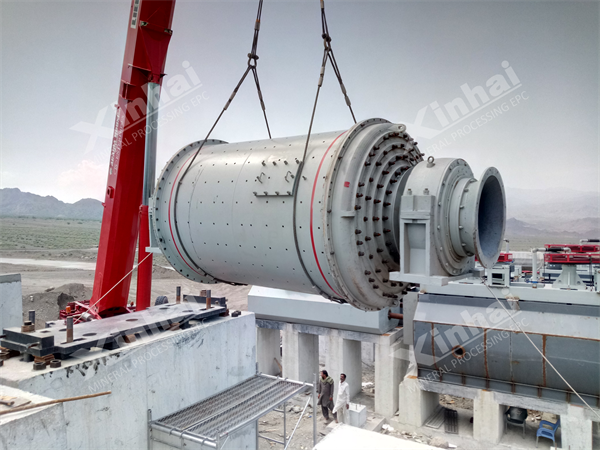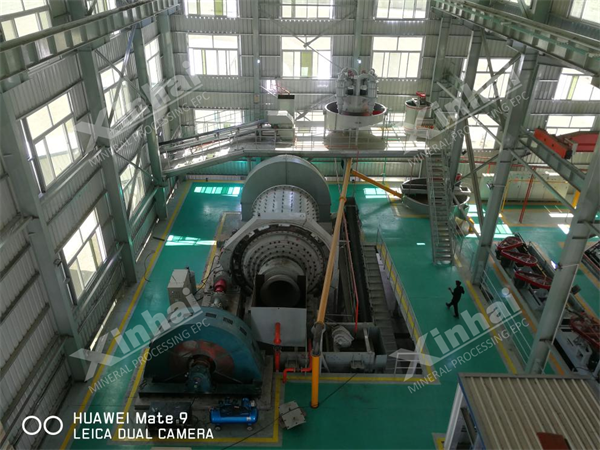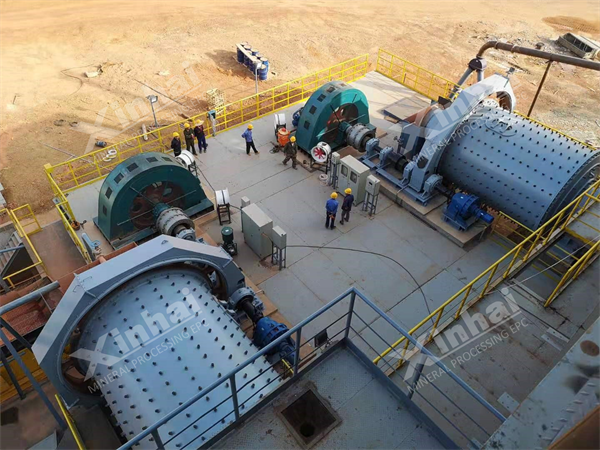The processing capacity of a ball mill determines the amount of material a ball mill device can handle each day. A 1500-ton ball mill refers to a single device's ability to process materials up to 1500 tons per day. Such ball mill models are typically larger and can meet the grinding operation needs of large and medium-sized beneficiation plants. This article provides a brief introduction to common models and equipment parameters of 1500-ton ball mills.

1. Grid-Type Ball Mill Models and Parameters
Grid-type ball mills are generally used for coarse grinding or the first stage of grinding. They feature discharge grids at the discharge end, forcing qualified particles to be discharged to avoid over-grinding and material slurry, which can affect subsequent beneficiation processes. The following four grid-type ball mill models are recommended to meet the daily production demand of 1500 tons:
MQGg2740:
Diameter: 2.7m
Length: 4m
Motor Power: 380kW
Processing Capacity: 12.5~152t/h
Effective Volume: 19m³
Ball Loading: 42t
Weight: 98,454kg
MQGg2745:
Diameter: 2.7m
Length: 4.5m
Motor Power: 450kW
Processing Capacity: 13~160t/h
Effective Volume: 22m³
Ball Loading: 40t
Weight: 100,016kg
MQGg2747:
Diameter: 2.7m
Length: 4.7m
Motor Power: 475kW
Processing Capacity: 13~170t/h
Effective Volume: 23m³
Ball Loading: 45t
Weight: 101,645kg
MQGg2760:
Diameter: 2.7m
Length: 6m
Motor Power: 630kW
Processing Capacity: 15~200t/h
Effective Volume: 30m³
Ball Loading: 60t
Weight: 119,546kg

2. Overflow-Type Ball Mill Models and Parameters
Overflow-type ball mills are generally used for fine grinding or the second stage of grinding in two-stage grinding. They rely on continuously feeding materials from the feed end, increasing the internal pressure of the cylinder, and forcing materials to be discharged from the discharge end, resulting in longer grinding time and finer particle size. The following four overflow-type ball mill models are recommended for meeting the daily production demand of 1500 tons:
MQYg2740:
Diameter: 2.7m
Length: 4m
Motor Power: 380kW
Processing Capacity: 12.5~152t/h
Effective Volume: 19m³
Ball Loading: 42t
Weight: 93,441kg
MQYg2745:
Diameter: 2.7m
Length: 4.5m
Motor Power: 380kW
Processing Capacity: 12.5~163t/h
Effective Volume: 20.5m³
Ball Loading: 40t
Weight: 96,196kg
MQYg2747:
Diameter: 2.7m
Length: 4.7m
Motor Power: 400kW
Processing Capacity: 13~170t/h
Effective Volume: 23m³
Ball Loading: 45t
Weight: 97,605kg
MQYg3231:
Diameter: 3.2m
Length: 3.1m
Motor Power: 630kW
Processing Capacity: 14~180t/h
Effective Volume: 21.4m³
Ball Loading: 45t
Weight: 112,430kg
1. Pakistan 1500 t/d Copper Mine Project
The project involved the entire industry chain service (EPC+M+O) for a copper mine in Mexico. Wet grid-type ball mills produced by Xin Hai were used for grinding operations. The grinding fineness was controlled by a linear vibrating screen in the classification stage, and XCⅡ classification-type hydrocyclones were used for grading. The final grinding fineness was -200 mesh, accounting for 68.0%.
2. Armenia 1500 t/d Copper-Lead-Zinc Project
This project dealt with carbonate-type ore deposits, with main metal minerals being galena and sphalerite. Amphibole was present as gangue minerals. The original ore grade was 5.61g/t. In the crushing and grinding stage, a two-stage closed-circuit grinding process was adopted, with lead rough concentrate being re-ground, and priority flotation followed by two-stage dewatering. Xin Hai's 1500-ton autogenous mill was used, which has a high grinding ratio and can replace some of the work of crushers, saving costs.

3. Guinea 1500 t/d Gold Mine Project
This gold mine plant was designed, manufactured, and constructed strictly according to international design, manufacturing, and construction standards. Xin Hai provided high-quality beneficiation plant services to customers with efficient and energy-saving equipment and scientifically reasonable processes. In the grinding and classification stage, a two-stage closed-circuit grinding process was adopted, and slurry pumps and cyclones were used instead of traditional screw classifiers. This improved grinding and classification efficiency while reducing investment.
The role of ball mills in beneficiation plants is crucial, and the cost investment in the grinding stage is significant in the entire beneficiation process. Choosing a suitable ball mill is essential and lays the foundation for meeting standards and achieving production targets in beneficiation plants.